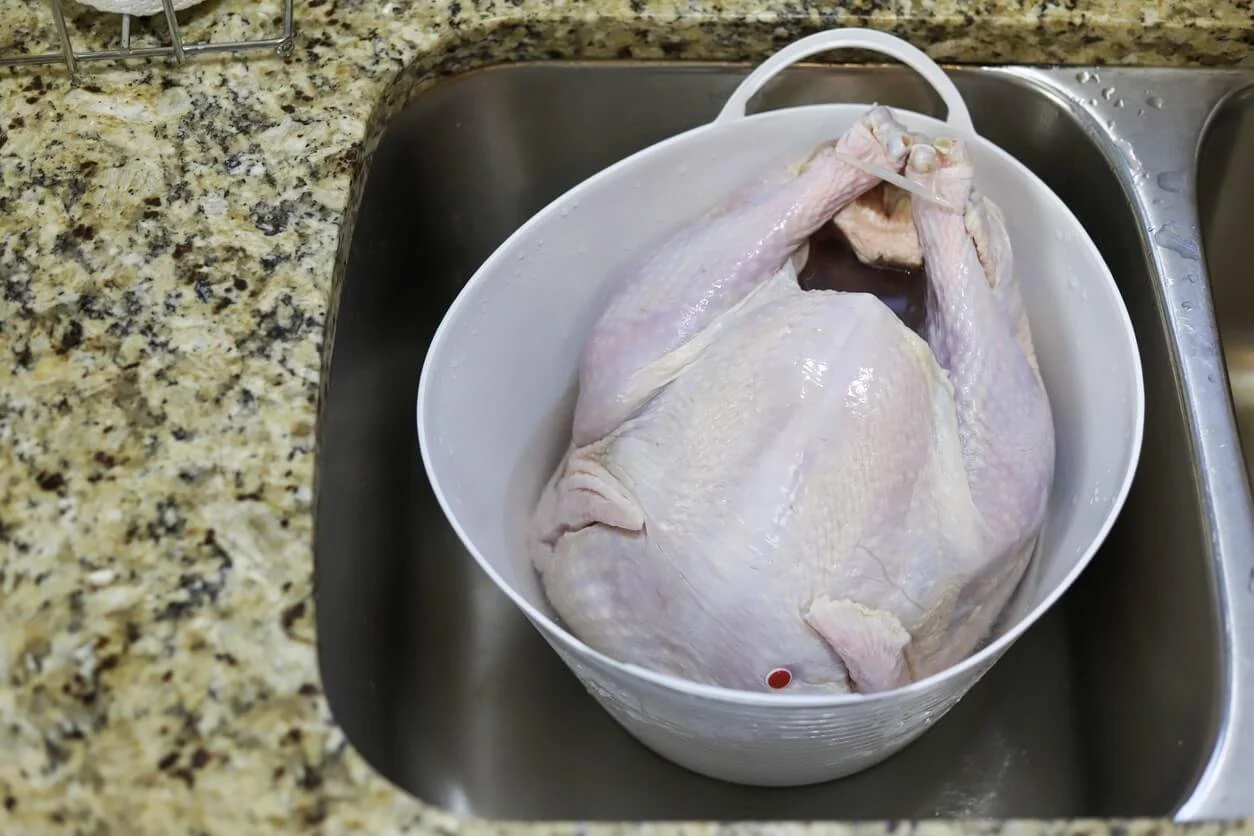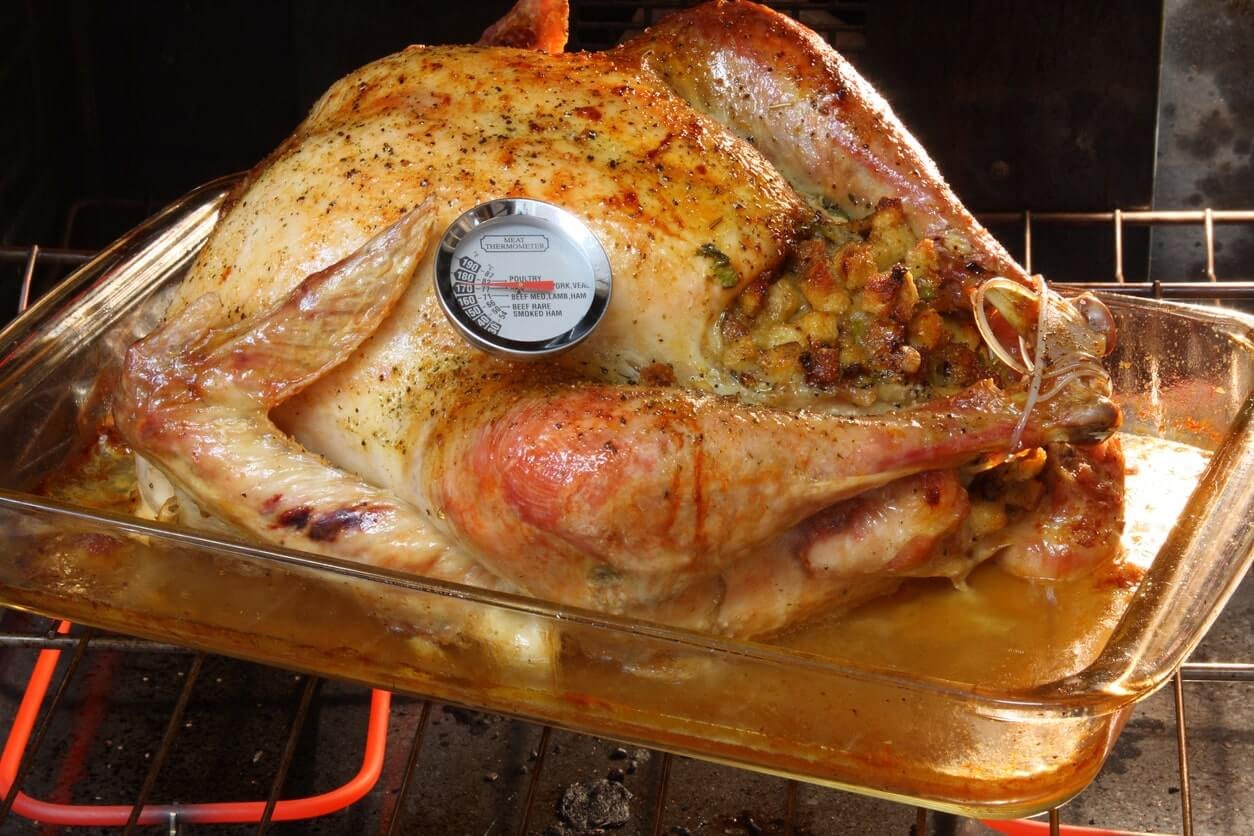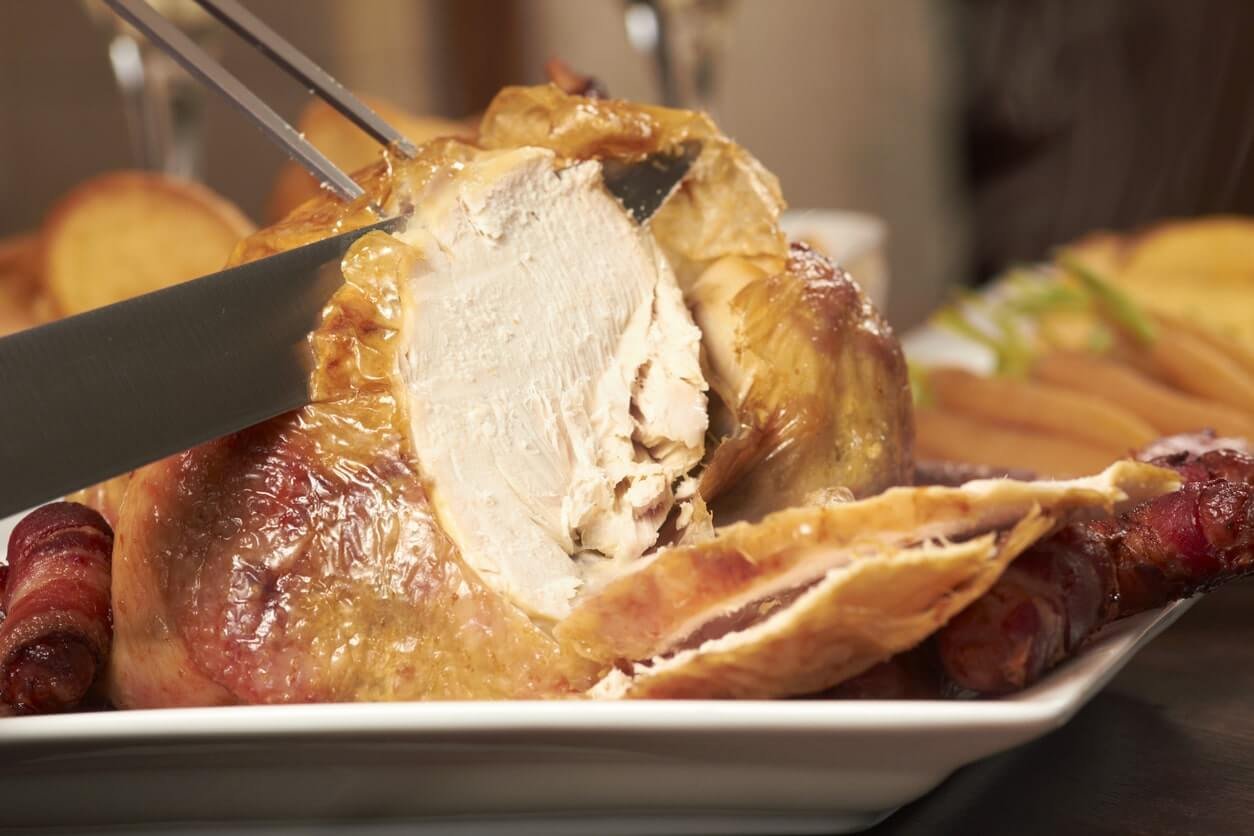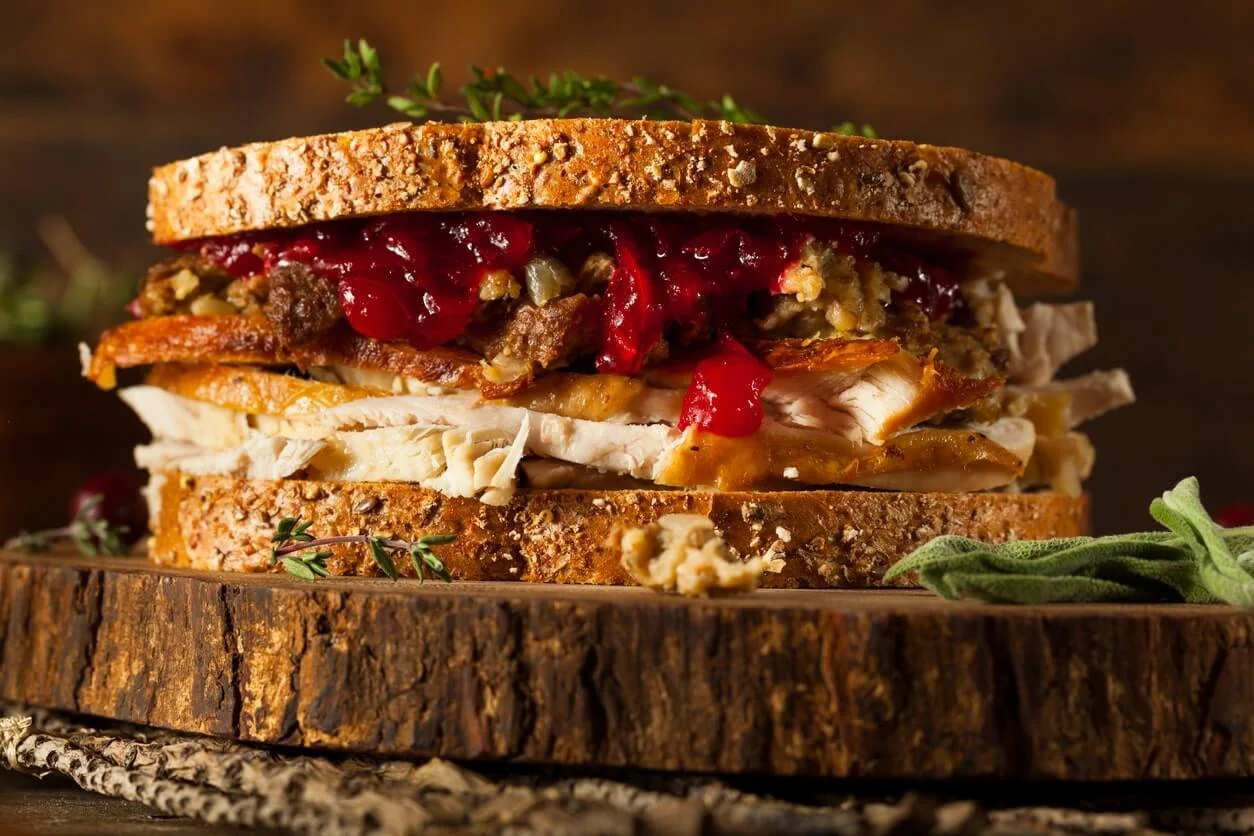How to Roast a Delicious Thanksgiving Turkey
Discover > Texas Recipes > How to Roast a Delicious Thanksgiving Turkey
There is some debate around our great nation as to what the greatest Thanksgiving centerpiece is, and turkey (What wine goes well with turkey?) is typically always the unbridled winner. It’s not surprising, either; it’s delicious, versatile, and, of course, for many, it’s one of the rare occasions where they enjoy it.
Naysayers will all say it’s impractical to roast a turkey whole because the white meat (What wine goes well with white meat?) cooks faster than the dark meat, which while true, I’m here to show you around that. Which is probably why you’re here. A no-nonsense guide on roasting a whole bird with crispy skin, moist meat, and drippings for a gravy that’ll hit it out of the park.
Choosing a Turkey
There are two important things to consider when you go turkey hunting (pun intended): the size (relative to how many people you need to feed), and sourcing the turkey.
As a general rule of thumb when considering the size of a turkey, it’s one pound of meat per person. Typically the largest turkeys you’ll find will weigh approximately 20 pounds which l would feed a pack of 20. Of course, if you’re feeding more and/or want leftovers for a nice turkey pot pie, you’re best off buying two.
Keep in mind the size of your oven and, if you’re feeding a large family, be ready to roast them one at a time. You could consider cooking the second bird entirely differently, such as deep-frying it.
Sourcing the turkey is as important as cooking it. Consider the quality of the meat: both for the animal’s welfare, and to ensure that you have a deliciously succulent bird, and so should be at the forefront of your decision-making.
There are three options in sourcing your turkey:
Visit your local butcher who sources high-quality turkey
Go turkey hunting when the season begins at the start of November (start of October if you’re a fellow archer)
Check out our directory and find a local farm that either delivers turkeys or lets you pick them up (I recommend the latter, it’s great fun).
Preparing Whole Turkeys for the Inferno
The majority of the flavor that will go into the turkey will be from the stuffing. Possibly the most important however is salt and there’s one tried and true way to salt a bird so that it’s evenly seasoned to perfection: brining.
You can either dry brine or wet brine a bird, a lot of people swear by either. Personally, I usually go with a wet brine for one primary reason: when you wet brine the muscle fibers absorb much more water which for obvious reasons is beneficial for a bird that is notoriously lean.
To wet brine, you simply make a solution of cold water and salt in a ratio of one cup of kosher salt (how long does kosher salt last?) per gallon of water. Make sure you have a massive pot or bowl to hold both the brine and fully submerged turkey.
Once the turkey is fully submerged in your brine simply leave it in the fridge overnight. Although space may be limited it’s an important step to avoid any growth of pathogens. A great solution to this is to fill a large cooler with cold salt water and brine the turkey in there.
The last step in the brining is to let the turkey air dry for at least a couple of hours so that the skin gets really nice and crispy in the oven. Following that all you have to do is preheat the oven, stuff the bird, and prepare it in the tray.
Make your life easier by ordering kosher salt online; it's just a few clicks away!
Oven Temperatures & Cooking Times
I always say whenever you cook any kind of poultry go off internal temperature and not solely time. Of course, time is important because if you open the oven every hour to check the temperature it’ll severely delay the cooking time as the oven loses a lot of heat every time the door is opened.
It’s important to roast a turkey elevated in the baking tray. There are special racks made just for this but there’s a better way. Place the bird onto a bed of vegetables (garlic, onions, carrots, celery, fennel (how long does fennel last?), fresh herbs, peppercorns, etc). This will make beautifully aromatic juices that you can baste the turkey with and eventually make gravy with.
Right before you place the turkey into a baking tray, rub the entire bird generously and evenly with softened butter. This will help ensure crispy skin, keep the bird moist, and impart a lot of flavor.
Another general rule of thumb for a stuffed turkey is 15 minutes per pound of meat at 350ºF. Here’s a little trick for the crispiest skin: preheat the oven to 450ºF. Once you get the turkey in the oven the temperature will drop to around 400ºF or less. Roast the turkey at that temp (400ºF) for 30 odd minutes, then turn the temperature down to 350ºF and bake for the remaining time until the internal temperature reads between 160 and 170ºF.
Again the breast will cook faster so it may have a higher temperature. The safe temperature for turkey is 165ºF but as you’ll read in the next step 160 is fine.
Avoid the crowds and shop for baking trays online from the comfort of your home!
Resting
If you haven’t done it before, burn it into your brain that resting is an absolutely essential step in making the perfect turkey. It’s typically never one big step that makes superior cooking it’s many smaller steps that elevate your cooking from basic home cooking to amazing food you’d pay a restaurant for.
Rest the bird for AT LEAST 30 minutes but closer to 45-60 minutes. Make sure you rest that bird uncovered because this will steam the bird and cause that crispy skin you worked so hard for to go soggy. The turkey will continue to cook during that time raising the temperature up to a safe one while also letting the bird absorb many of its juices.
Leftovers
Leftovers can be surprising for days after the turkey has been made. Some of the best things to do with said leftovers are sandwiches (What wine goes well with sandwiches?) and wraps, for which you can also use cranberry sauce and/or stuffing. A turkey pot pie, maybe you have some pastry left over. Turkey and dumpling soup, a southern classic and favorite all around. Or maybe a spicy or mild curry that you can easily whip up in under 30 minutes.
Be creative, look it up, check recipe books, ask friends. Almost any recipe that involves poultry you can use this leftover turkey for.
The beautiful thing about delicious, homemade food is that good cooking habits are habitual. If you’re just starting out taking charge of thanksgiving cooking it can seem daunting and too stressful to enjoy. Rest assured however that with the tips you’ve read here the most important part of Thanksgiving dinner will be in the bag.







